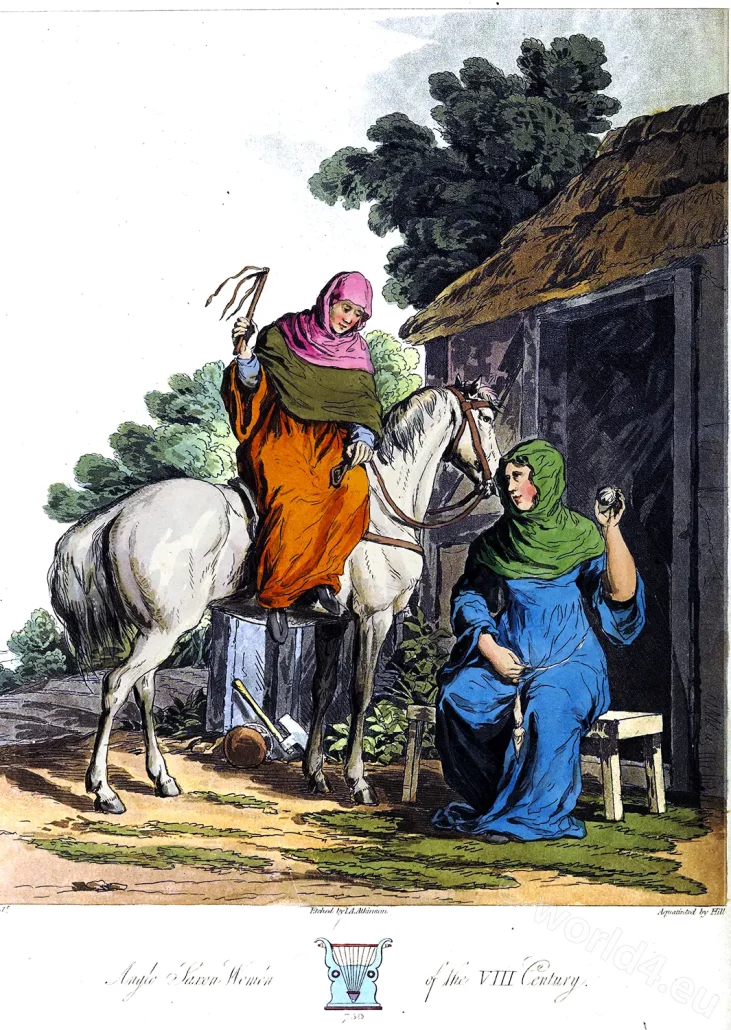COSTUME OF THE EIGHTH CENTURY.
ANGLO-SAXON WOMEN. ANNO 750
by Charles Hamilton Smith.
The Anglo-Saxon women were habited with simplicity, convenience, and elegance; a taste which denotes they were as yet far distant from that restless desire of variety, which is ever attendant on an advanced state of civilisation, the characteristic of superfluity, and the companion of luxury. They dressed in long loose gowns reaching down to the ground with large sleeves. Notwithstanding the assertion of Richard Verstegan to the contrary, there is little doubt but they wore linen under the gown; though probably dyed of various colours; and the close sleeves observable within those of the gown, may be conjectured to represent that part of the dress, which, even in the earliest ages, seems to have been worn by all the northern nations.
The gown in the illuminations is not infrequently embellished with bands of different colours, or of embroidery, about the knees and at the bottom. It does not appear they wore any other covering for their heads than the veil, cover-chief, or hood, which falling down upon the forehead, was carefully wrapped round the neck and shoulders. Their shoes were plain, sometimes slit down the middle of the instep, and commonly of a black colour. Over the shoulders often appears a cloak which seems to have had a hole cut in the middle for the purpose of passing the head through.
These general habits continued to be worn for several centuries after the period under consideration, and indeed with little alteration but what arose from a more cultivated attention to the embroidery and disposition of colours down to the end of the Saxon sera. In the oldest manuscripts where colours have been employed, green, blue, and light red seem to have been the predominant hues of the clothing, thought here are some pink and others violet, but very few perfectly white.
The figure on horseback has besides the gown and under garment a hood and cloak of the description above mentioned. It is worth observing that riding sideways is not so recent a practice as has been asserted; the figure sits however on the off side of the horse. The other is spinning or winding something from a bobbin. The back-ground is ideal.
AUTHORITIES.
Both the riding and sitting figures, and the axe observable under the horse, are copied from an Anglo-Saxon MS. of the eighth century in the Cottonian Library, B. M. marked Claudius, B. IV.The ancient lyre below, from another somewhat posterior in date, marked Tiberius, B. V.
Source: Selections of the ancient costume of Great Britain and Ireland from the seventh to the sixteenth century, by Charles Hamilton Smith. London: Colnaghi, 1814.
Discover more from World4 Costume Culture History
Subscribe to get the latest posts sent to your email.








